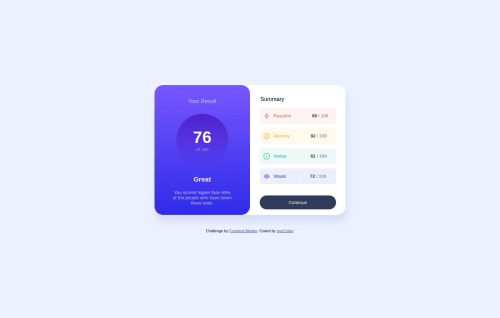Submitted over 2 years agoA solution to the Results summary component challenge
Flexbox with Results summary component project!
@moi21dev

Solution retrospective
- Problem 1
I think I should have made a grid for the summary content, that way I could have positioned every item in a more precise and clean way. I have to embed the last two scores in a separate div, just to make them justfied on the right side. What was the best way to achieve the correct position?
- Problem 2
The responsive part was tricky. I had to add media queries, instead of relying on Flexbox only. The result side was always too big on mobile. What is the easiest way to do that?
Code
Loading...
Please log in to post a comment
Log in with GitHubCommunity feedback
No feedback yet. Be the first to give feedback on moi21dev's solution.
Join our Discord community
Join thousands of Frontend Mentor community members taking the challenges, sharing resources, helping each other, and chatting about all things front-end!
Join our Discord